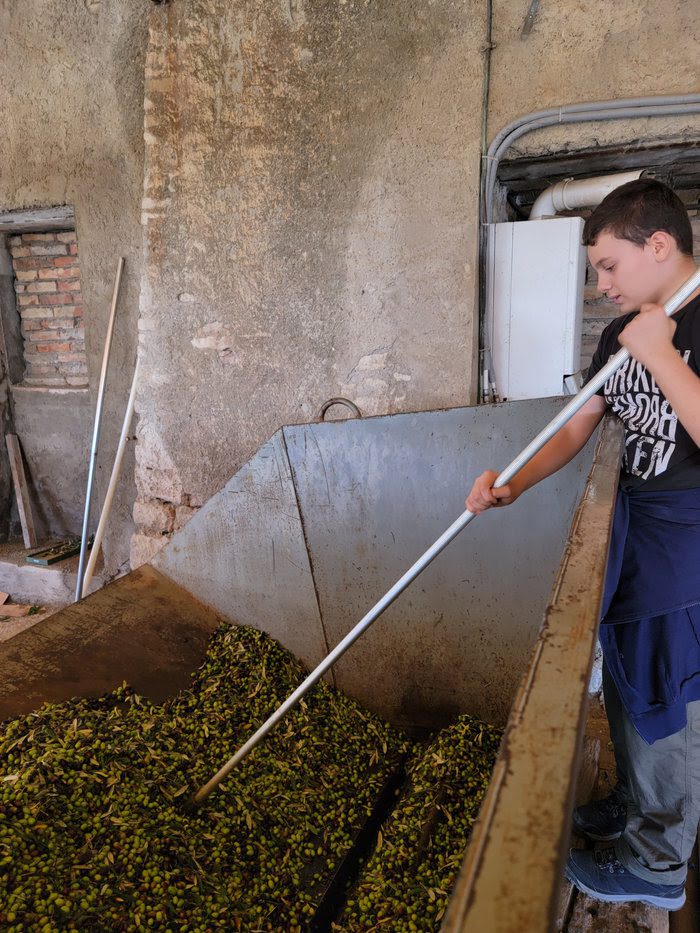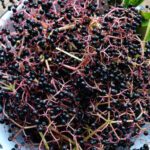
| Earlier this week I returned home from a vacation in Tuscany, where I got to see how the olives get pressed. In this multi-part series, we’ve covered that olive oil is one of the most fraudulently labeled grocery items, why fresh olive oil is basically a “superfood,” and regions that matter when selecting olive oil. Tuscany may be the number one region associated with olive oil. In part, this is because it has always been integral to the region, something that local Tuscans have harvested each October since before the Roman Empire. NBD. But that is also true of Greek, Spanish, Tunisian, Lebanese, and all the Mediterranean olive oil producers. Italy’s olive oil associations marketed olive oil to Americans the most aggressively, successfully making a bottle with an Italian flag appear more premium than a Greek flag on the label. The exportation of Italian olive oil is largely mafia-controlled, but what did olive oil production look like in Tuscany last week? Producing Tuscan Olive Oil: A Day In the Life The hills of Tuscany are orchards after orchards of olive trees. In the countryside, some trees are newly planted while other orchards are full of mature trees. In 2022 Tuscany experienced an exceptionally hot summer and warmer temperatures than usual in October. The last two weeks of October are the “first harvest” of olives meaning the freshest, youngest fruit. This will give an oil a bolder taste, more peppery notes, and more polyphenols (amino acids and proteins). Oils made during these early harvest weeks are called Olio Nuevo and is the type of olive oil considered delightful to drink straight. I’ve been putting mine in espresso cups. Driving through the rolling hills, locals had their cars (usually a dust-covered Fiat) pulled to the side of a hilly road while harvesting nearby. They lay nets on the ground under the tree to catch the olives. Tuscany takes pride and stands apart from other Italian regions for harvesting by hand – not even shaking a branch to see what falls off but picking each olive individually. Other regions will use a tool to shake the tree and just take what falls off. This year, the olives were so dense it would generally take a group of ten a full afternoon of work to harvest four trees. For locals, this is not a job. It’s a personal side gig. Considering the trees are literally everywhere, it takes an entire season of labor to harvest the maximum amount of olives. Harvesting by hand is incredibly labor intensive. Climbing olive trees can be especially treacherous because branches bend easily, making it easy to fall. Every family dedicates as much time as possible to harvesting olives through the fall. Once as much is harvested for the day as possible, it’s a rush to get olives to a local press as soon as possible. Families will put bids into two or three local presses hoping for the soonest time slot in the lottery system. Pressing the olives as soon as possible after harvest is crucial for flavor and preservation. Olive oil is a fruit juice, so it’s all about freshness. Getting a good time slot often involves contentious local politics, causing arguments and tensions among families about who gets the good slots. Families will bring their olives to the press through the night, time slots are often scheduled for midnight and in the early morning hours. This is something almost every family does every fall. Once a family brings their olives to the small local press, the use of the equipment is dedicated to just their olives. The etiquette around the press is very much “your trees, your olives” it is very rare for families to combine their olives for efficiency, even if their trees are immediately next to each other. Because many of these orchards are hundreds of years old, there is a mix of olive varieties. Locals throw all the olive varieties in the press together without separation. All of this labor is for each family’s personal olive oil for the rest of the year. At the same time, it’s typical for families to set aside olives in brine to enjoy the rest of the year as well. The commercial process follows the same steps, except the commercial scale can add preservatives or cut non-virgin or heat-pressed oils with their EVOO. As the process for locals is entirely decentralized and each family is its own producer, Tuscans generally don’t buy olive oil. They make it. The local Tuscan seems unaware that bottles of “Tuscan Olive Oil” are being sold anywhere else nor do they seem to care if their region is being mislabeled on bottles overseas. There is little sympathy for the plight of buying bad olive oil; the Tuscan mentality is that if your EVOO is cut with something low-grade because of the mafia; it’s kinda on you for not doing the backbreaking work of harvesting your own olives. Their mentality isn’t just local – it’s each family for themselves. For better or worse, they are totally removed from the American dilemma of trying to secure non-fraudulent olive oil. For the Tuscan, it’s not really comprehensible that Americans search for “good” olive oil because, in their world, they secure it by getting a good time spot at the press. |


